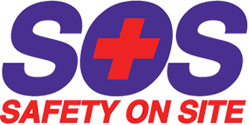Basic Life Support or BLS refers to the CPR certification required by most healthcare providers and first responders like paramedics, firefighters and nurses. This training prepares participants to work in high-performance teams and provide high-quailty cardiopulmonary resuscitation (CPR) with fewer interruptions. BLS provides a higher level of care to patients in cardiac arrest with the aim of improving patient survival outcomes.
The Canadian Red Cross transitioned from HCP to BLS level for healthcare providers in 2019. Red Cross BLS better aligns with Heart and Stroke BLS standards and provides greater skills for first responders who work in a clinic, hospital or pre-hospital environment.

What is BLS certification?
How often do you recertify BLS?
BLS is an annual recertification that is completed in just a few hours. As these skills can easily be forgotten if not used or practised, annual recertifications will ensure that healthcare providers and first responders stay trained and capable of performing CPR at moment’s notice. It is the first responder’s responsibility to keep their BLS skills current by means of recertifications.
What are some of the differences between HCP and BLS?
The Red Cross has published a new BLS pocket field guide resistant to water and dirt for students to take home. BLS certifications differ from HCP by including:
- How to do pulse checks on patients with differing levels of responsiveness. Patients can have an altered level of consciousness or be completely unconscious.
- Additional CPR and AED instructions for new borns or neonates
- Bag-Valve-Mask (BVM) instructions for lone responders or with a partner
- More in-depth understanding of different types of airway obstructions
- More detail regarding assisted ventilations with or without compressions
- Instructions for assisted ventilations provided with bradypnea (breathing too slow) and tachypnea (breathing too quickly)
- Primary assessments for hypothermia
- Signs of Opioid overdoses
- The six rights medication
- High-performance CPR with two responders.
- Directives for post-cardiac arrest care
- High-performance team communication.
BLS care requires physical skills, critical-thinking and problem-solving skills, and the ability to work in a team to provide the best possible care and improve patient outcomes for survival. When working in teams, roles are assigned and coordinated by a team leader who ensures that everyone clearly understands the role they play during resuscitation attempts. The leader also ensures that all key interventions are timely and minimize interruptions to CPR.
Who should take this course?
The Red Cross BLS program is designed to build confidence in performing cardiopulmonary resuscitation (CPR) skills in a team environment for professionals with a duty to respond.
Persons who should take BLS include in-facility care providers, including nursing staff, care aides, medical and dental professionals. Pre-hospital care providers, which may include professionals in a fire service, rescue team, sports-medicine, lifeguards and ski patrol.
What are the completion requirements for certification?
No prerequisites are required to take this training. To successfully complete the course, students are required to attend 100% and to demonstrate with competence all the course skills taught in the course. There is also a written evaluation and students are required to obtain a minimum grade of 75%.
Where is BLS offered?
SOS First Aid offers community BLS certifications and recertifications at the Living Arts Centre in Mississauga, two Burlington locations, two Oakville locations and at our training centre in Stoney Creek. We also provide private training for groups at your location or ours.
How do I register for a course?
Registration is easy. Visit one of our geographical location pages. Find the date that is convenient for you and click on the register button. Payment can be made by credit card, paypal or etransfer.






